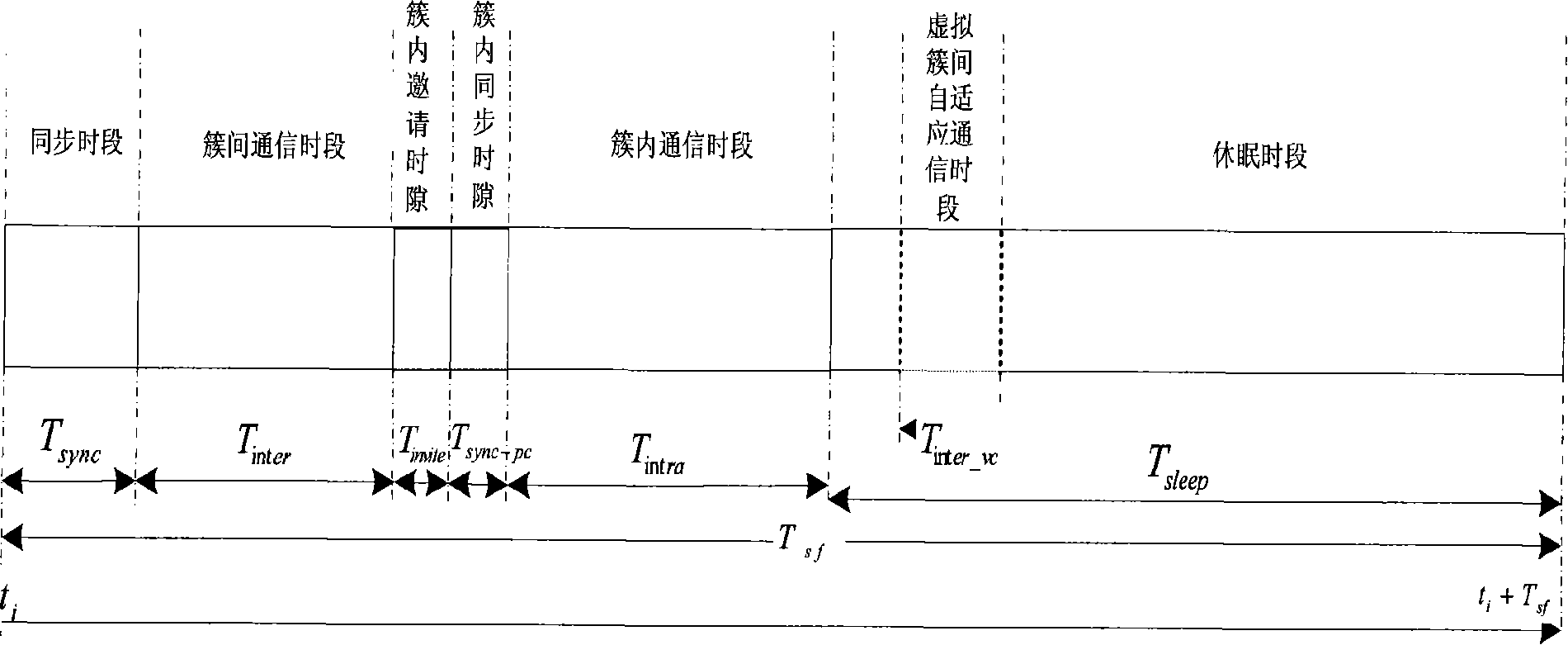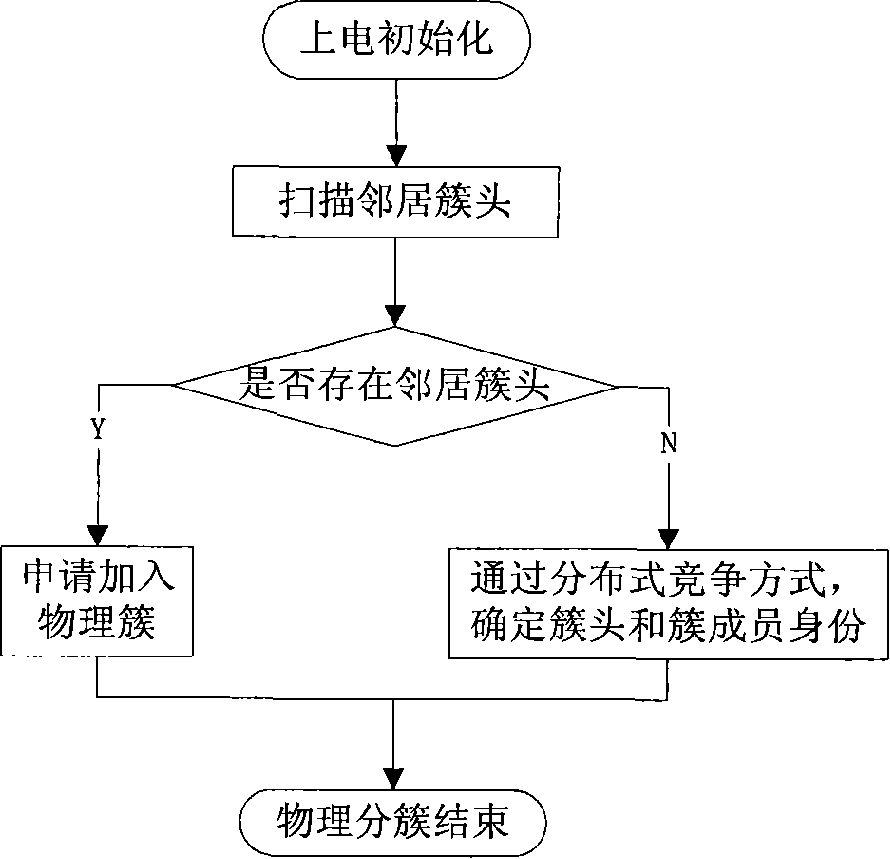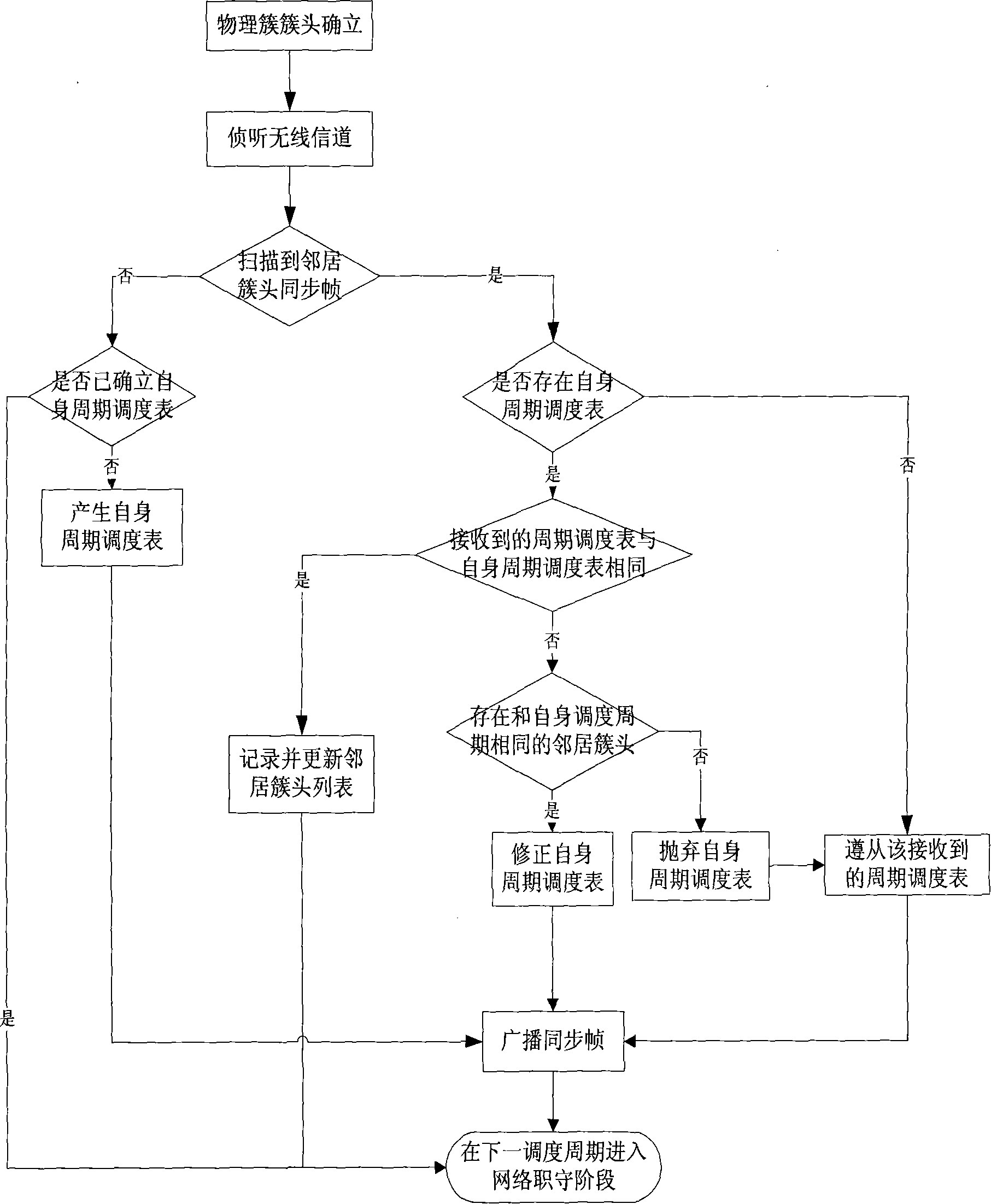Double cluster based wireless sensor network distributed topology control method
A wireless sensor and distributed topology technology, applied in the direction of synchronous signal speed/phase control, communication between multiple stations, advanced technology, etc., can solve the high requirements for cluster head physical layer implementation, no network energy balance mechanism, Complicated timing control and other issues, to reduce the probability of inter-cluster frame collisions, improve network energy efficiency, and achieve the effect of network load balancing
- Summary
- Abstract
- Description
- Claims
- Application Information
AI Technical Summary
Problems solved by technology
Method used
Image
Examples
Embodiment Construction
[0037]To facilitate the description of the embodiment of the present invention, the superframe structure used in the embodiment of the present invention and the attribute parameters of each time period are introduced first. A scheduling period is a superframe. The periodic scheduling table specifies the work and sleep scheduling mechanism of a physical cluster head and cluster members, mainly including a synchronization period, an intra-cluster communication period, an inter-cluster communication period, and a sleep period. A scheduling period is a superframe, and the Cluster heads and cluster members set their own working and sleeping periods according to the periodic schedule of the physical cluster head. Such as figure 1 As shown, a complete superframe T sf Includes the following periods:
[0038] Inter-cluster synchronization is the synchronization period T sync , which is set for the cluster head to send the synchronization frame. There is a certain time margin in thi...
PUM
 Login to View More
Login to View More Abstract
Description
Claims
Application Information
 Login to View More
Login to View More - R&D
- Intellectual Property
- Life Sciences
- Materials
- Tech Scout
- Unparalleled Data Quality
- Higher Quality Content
- 60% Fewer Hallucinations
Browse by: Latest US Patents, China's latest patents, Technical Efficacy Thesaurus, Application Domain, Technology Topic, Popular Technical Reports.
© 2025 PatSnap. All rights reserved.Legal|Privacy policy|Modern Slavery Act Transparency Statement|Sitemap|About US| Contact US: help@patsnap.com



